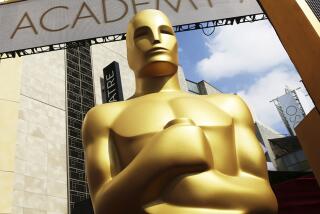Seedy Hollywood alleyway becomes a welcoming pedestrian thoroughfare
- Share via
Eighteen years ago, when Dave Gajda bought the building on the corner of Selma Avenue and Cahuenga Boulevard in Hollywood, the space that now houses Saint Felix restaurant and bar was a needle exchange. His office on the second floor looked out on the alley, which had an unprintable nickname due to the stench of human waste from homeless encampments. Things were so bad that Gajda had the alley gated for security.
Today that same alley has been opened as Hollywood’s first pedestrian thoroughfare. Called EaCa Alley (for East Cahuenga), the passage between Selma and Hollywood Boulevard has been paved with attractive red bricks; 13 trash bins have been eliminated; and the businesses lining the east side of Cahuenga have begun placing tables and chairs in the alley, although a few permits are still needed before the bulk of businesses can serve food and alcohol outdoors.
EaCa Alley is the first in what organizers hope is a series of alley rehabs across Hollywood. The recent shuttering of L.A.’s Community Redevelopment Agency, which largely financed EaCa Alley for nearly $800,000, limits those prospects, but several business owners are still moving ahead. The backers of a new nightclub called AV, set to open in several days, and a new trattoria next door called Aventine, opening in two months, hope a similar alley on the west side of Cahuenga will form the entrance to their hotel project a couple years from now.
“We have 26 alleys in Hollywood, so this now becomes a template for what we can do,” said City Councilman Eric Garcetti at EaCa Alley’s grand opening ceremony last month. Since 2007 Garcetti has worked with business owners, the Hollywood Business Improvement District and L.A.’s now-closed Redevelopment Agency to make the alley a reality.
Gajda, president of the EaCa Alley Assn., says that although much remains to be done to beautify the space and make it a thriving dining and drinking destination, plans are in the works. These include hosting an art walk and staging pop-up retail stores inside existing spaces such as Saint Felix. He is also working with local tour companies to make EaCa Alley an official lunch stop.
“As we create more revenue in the alley, we’ll be able to do more,” he says.
Saint Felix owners John Arakaki and Jay Krymis say they chose to open the restaurant at the south end of the alley because of the promise of EaCa.
“Our hope is that it’s going to attract a lot of people not just to us, but to this entire alley,” Krymis said.
The idea for EaCa Alley came from the UCLA master’s thesis of Sarah MacPherson, who had been at the Business Improvement District for nearly 13 years and was earning her degree in urban planning. Garcetti calls her the “Queen of the Alley.”
“The thesis was all about how we could utilize these underutilized spaces that were very often neglected and scary places to walk in,” MacPherson said. “And how we could turn them into friendly, vital places to be.”
The plan that grew out of MacPherson’s thesis envisioned EaCa Alley as the first of many thriving pedestrian thoroughfares in Hollywood. These public spaces would be in keeping with Hollywood’s reemergence as a cohesive, increasingly residential neighborhood and would go a long way toward promoting the safety and general attractiveness of the area.
Gov. Jerry Brown’s controversial move to shut down California’s community redevelopment agencies as part of a state budget overhaul late last year has made raising new funds a challenge, Garcetti says, but there are other ways to get money. Park funds, perhaps, or block grants from the government.
Businesspeople and developers who see the success of EaCa Alley may want to replicate it. That’s already happening across Cahuenga with the west alley (which was supposed to be the improvement district’s second alley and named WeCa).
Richard Heyman, a partner in the nightclub AV, Aventine trattoria and the Dream Hotel that is scheduled to open within two years near the corner of Cahuenga and Selma, says that funds for the hotel will be used to finance rejuvenating the west alley, which eventually could be paved with cobblestones and used as an entrance to the hotel.
A thriving alley is worth the price tag, Heyman said on a call from Shanghai, China, where he is raising said funds. “It’s all part of the master plan.”
More to Read
Sign up for Essential California
The most important California stories and recommendations in your inbox every morning.
You may occasionally receive promotional content from the Los Angeles Times.











